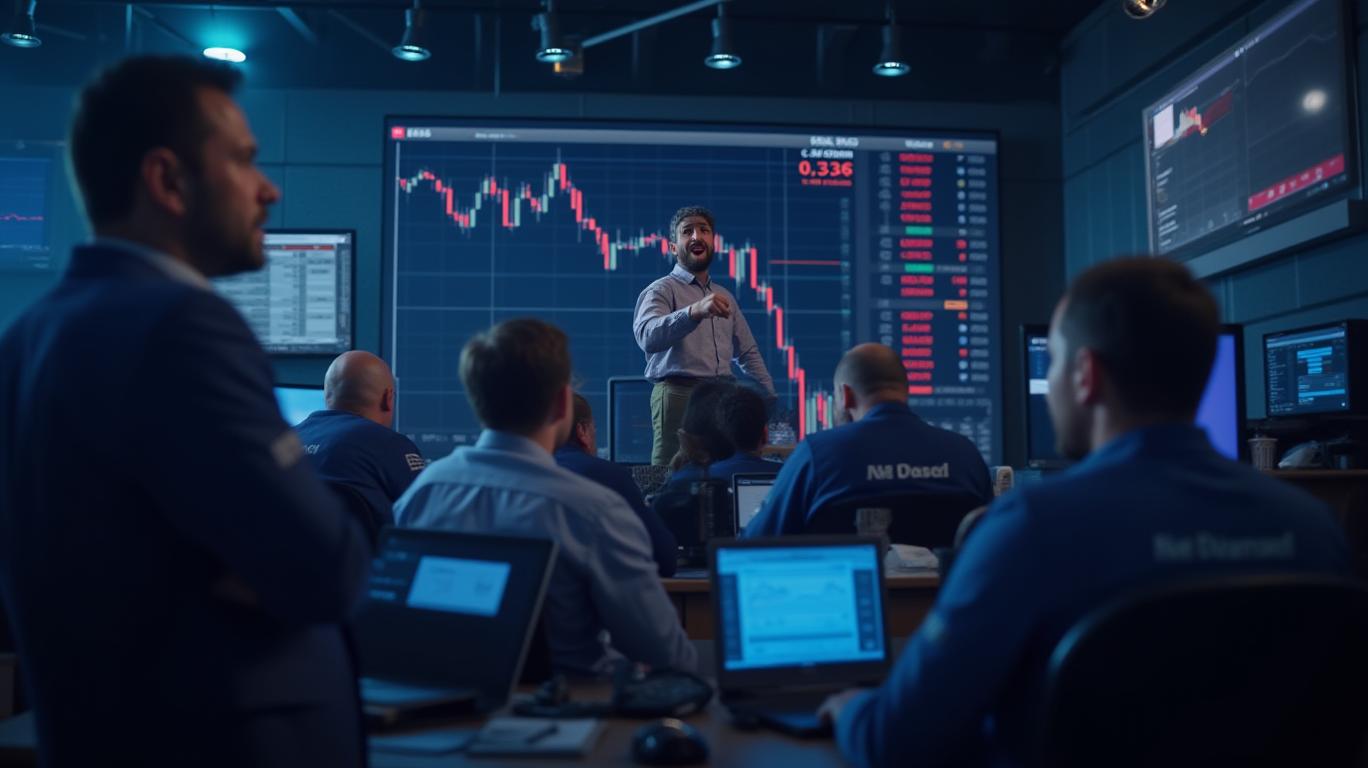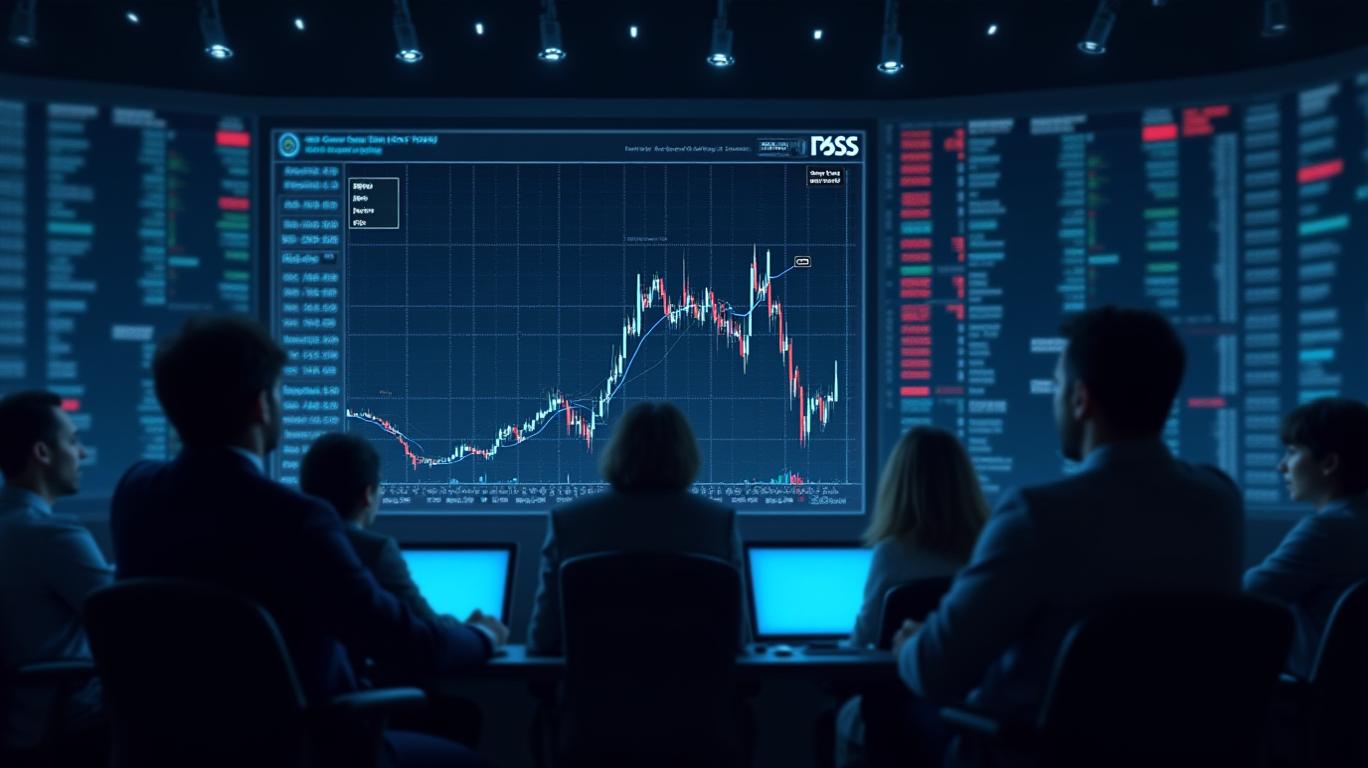The Midday Rally Playbook: Capturing ETF Gains in a Volatile Market
The U.S. equity market’s midday session—particularly the hours after 2 PM EST—has emerged as a critical battleground for tactical investors. Driven by algorithmic trading patterns, news-driven volatility, and the lagged reaction to morning data releases, this window presents opportunities for ETF investors to capitalize on sharp price swings. In May 2025, the Federal Reserve’s communications and economic data releases created textbook examples of midday surges, with sector-specific ETFs like the SPDR Technology Select Sector Fund (XLK) and Financial Select Sector Fund (XLF) offering asymmetric return profiles. This article outlines how to exploit these dynamics while mitigating risks through disciplined strategies.
Ask Aime: "Can you predict the SPDR Tech ETF's midday price surge in May 2025?"
The Midday Volatility Engine: Fed News, Data Releases, and Algos
The midday rally phenomenon is a product of three forces: delayed human and algorithmic reactions to morning news, the rebalancing of ETFs tied to sector-specific data, and the herd behavior of momentum-driven traders. Consider the May 6-7, 2025 Federal Open Market Committee (FOMC) meeting. While the Fed’s decision to hold rates steady at 4.25%-4.5% was widely anticipated, the statement’s emphasis on "increased uncertainty around trade policy risks" sparked a lagged reaction.
Ask Aime: "Can I time my trades to exploit midday market volatility in 2025?"

By 2:30 PM, algorithms began front-running sector rotations: tech ETFs like XLK rose 1.2% as traders bet that lower rate-cut odds would favor growth stocks over value. Meanwhile, financial ETFs (XLF) lagged, as the Fed’s reluctance to cut rates undermined banks’ net interest margin expectations. This pattern repeated on May 13, when the April CPI data—showing core inflation at 2.8%—caused a midday drop in XLK (-0.6%) but a rebound in defensive sectors like utilities (XLU +0.9%).
Ask Aime: "Exploit midday market surges with sector-specific ETFs like XLK and XLF."
The lesson? Sector-specific ETFs with narrow focus and high liquidity—like XLK or XLF—provide precision in capitalizing on these swings, while broad-market ETFs (e.g., SPY) dilute sector-specific signals.
Algorithmic Trading: The Invisible Hand of the Midday Surge
Algorithms dominate midday trading, exploiting inefficiencies between data releases and human digestion of complex Fed statements. For instance, the May 13 CPI report’s inclusion of a new methodology for leased vehicles—a tweak to the transportation index—initially confused algorithms.
The lag between data release and algorithmic rebalancing creates a predictable "midday window" of volatility. Traders using ETFs can time entries/exits by monitoring real-time sentiment shifts. For example:
- Tech ETFs (XLK): Buy on dips post-2 PM if the Fed’s tone is neutral-to-dovish (e.g., May 7).
- Financial ETFs (XLF): Fade the morning’s rally if inflation data undermines rate-cut expectations (e.g., May 13).
Case Study: May 2025—A Masterclass in Midday Strategy
May 7: Fed’s "Wait-and-See" Sparks Sector Rotation
After the FOMC meeting, XLK underperformed initially as traders focused on the Fed’s inflation hawkishness. But by 2:45 PM, algorithms detected that the Fed’s emphasis on "labor market resilience" favored tech’s high wage growth. XLK surged 1.5% by close, while XLF dropped 0.4% as rate-cut hopes dimmed.
May 13: CPI Data and Methodological Nuance
The April CPI’s core inflation print of 2.8% was slightly above expectations, but the new leased-vehicle methodology reduced transportation volatility. By 2:30 PM, XLK fell as traders worried about sustained inflation, but a subsequent Fed commentary (via minutes) downplaying the methodological shift sparked a rebound.
The Playbook: Timing Entries, Exits, and Risk Mitigation
1. Leverage Sector ETFs with High Liquidity
- Tech (XLK): Ideal for Fed-driven growth bets. Monitor FOMC statements and labor data (e.g., jobless claims).
- Financials (XLF): For inflation and rate-cut signals. Track CPI and Fed speakers’ comments post-2 PM.
2. Use the 2:00 PM-3:30 PM Window
Algorithms typically stabilize by 3:30 PM as volatility eases. Enter positions by 2:15 PM and exit by 3:20 PM to avoid late-day liquidity traps.
3. Risk Mitigation via Stop-Loss Parameters
Pair ETF plays with stop-loss orders tied to volatility indices like the CBOE Volatility Index (VIX). For example:
- Set a stop-loss at 1.5x the average daily range of XLK if the VIX exceeds 20 (a May 2025 average).
4. Monitor Fed Communication Cues
- Dovish language (e.g., "data-dependent" or "flexible policy") = Buy XLK post-2 PM.
- Hawkish warnings (e.g., "inflation risks elevated") = Short XLF or go long on inverse ETFs like FAZ.
Conclusion: The Midday Edge in ETF Trading
The May 2025 market provided a masterclass in midday volatility exploitation. By aligning ETF trades with algorithmic patterns and Fed-driven sector rotations, investors can capture asymmetric gains. The key is to act decisively in the 2-3:30 PM window while anchoring risk management to real-time volatility metrics.
For now, the playbook is clear: sector ETFs + timing + stops = profit. In a market where 80% of the day’s volatility occurs after lunch, this strategy isn’t just tactical—it’s essential.
Act now. The next Fed meeting is on the horizon, and the midday rally will be waiting.


_442a2dcc1749832873286.jpeg)
_e68fac6d1749831664430.jpeg)






